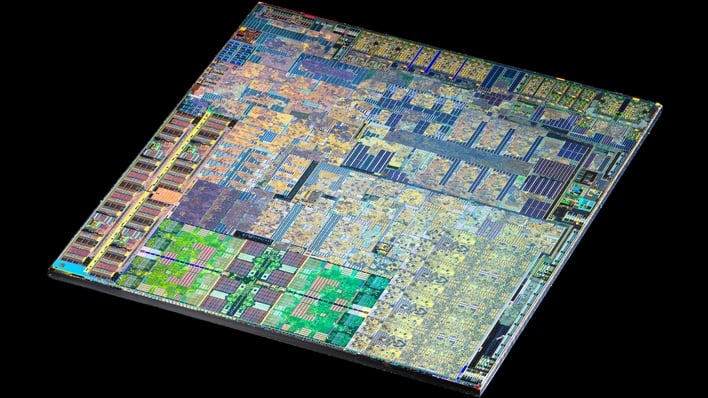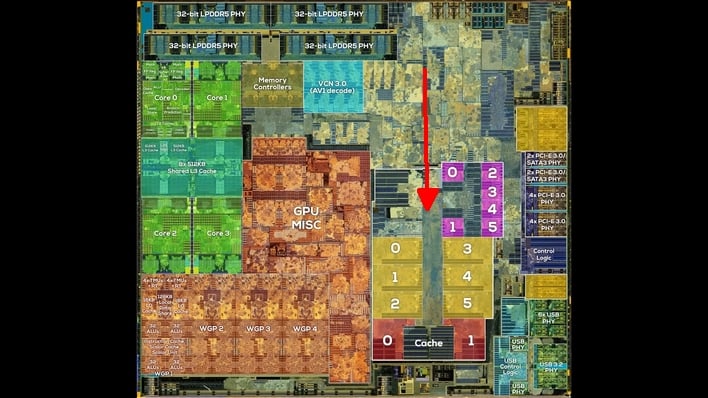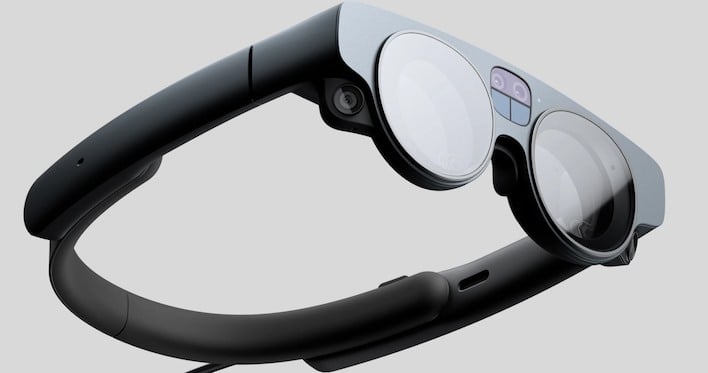Stunning Die Shots Show Off Steam Deck Handheld's Custom AMD Chip In Crisp Detail
If you follow PC hardware news, you'll almost assuredly be familiar with the name Fritzchens Fritz. The man is a photographer, and specializes in taking extremely high-detail pictures of processors with their silicon laid bare. If you've ever looked at an annotated die shot such as the many we've published here on the site, it probably originates from a photo by Fritzchens Fritz.
The man has worked his magic once again on the Steam Deck APU, alternately codenamed both "Van Gogh" and "Aerith". This is the original 7nm version of the chip used in the LCD Steam Decks; the OLED Steam Deck uses a considerably smaller 6nm chip known as "Sephiroth." The thing is, the move from TSMC N7 to TSMC N6 is actually rather small; it's a refinement, not a whole new node, and the die shrink doesn't explain how much smaller Sephiroth actually is.
A YouTuber called High Yield who specializes in semiconductor analysis is the man responsible for getting Fritz the Steam Deck motherboard he would have to destroy to take his lovely photos. That also got him early access to the high-resolution die shots from Fritz, and he set right to work analyzing them. Check out this annotated photo (annotations by High Yield):
In this shot, taken from the YouTube video embedded below, you can see most of the notable parts of the Van Gogh APU neatly highlighted. The LPDDR5 memory interface is up at the top, the four Zen 2 CPU cores and their 4MB of L3 cache are on the left, and the four RDNA 2 Workgroup Processors (WGPs) are down at the bottom-left. As an aside, it's fascinating to see just how little of the silicon the functional units take up.
When he was poring over the high-resolution die shots from Fritz, High Yield came to wonder what all this stuff over in the center-right of the chip was. If you know what you're looking at, it's easy to determine areas of cache and logic apart from one another. Very clearly, the silicon between the "GPU Misc" area and the external I/O on the right side of the die represents a number of processor cores with their own cache.
As High Yield points out, this same APU is actually used in another device: the Magic Leap 2 AR glasses. There, it's known as "Mero", and we actually covered this connection in the past. Another chip-layout-labeling expert, Locuza, noted that AMD's Van Gogh processor had too much silicon that isn't used in the Steam Deck. Figuring that it must have another use, he went on to remark that Van Gogh and Mero are "basically the same chip."

So what actually are all those components over there? High Yield noted that in the specifications for the Magic Leap 2 we see a note listing a "14 core computer vision processing engine (CVIP)". He points out that while they're not all the same type of core, there do indeed appear to be 14 cores on the Van Gogh/Aerith/Mero APU die. In that light, it sounds like he's found the answer to what all that silicon does.
Or what it's supposed to do, anyway—it doesn't do anything on the Steam Deck, which is probably why it was almost assuredly removed for the Sephiroth chip that drives the Steam Deck OLED. Sephiroth is 20% smaller than Aerith, and the Mero CVIP takes up around 13% of the die area on Aerith. Remove that, apply a process refinement, and you can pretty reasonably shrink things down by 20%.
Of course, all of this means that the Steam Deck's APU isn't nearly as "custom" as you might think, or perhaps from another perspective, it's actually even more "custom" than we thought—just not meant for Valve, originally. The Steam Deck has been a massive success beyond anyone's expectations, so we're really interested to see what secret sauce AMD cooks up for Valve's next iteration, whenever that happens. In the meantime, you can head over to Fritzchens Fritz's Flickr to gawp at the pretty pictures.





